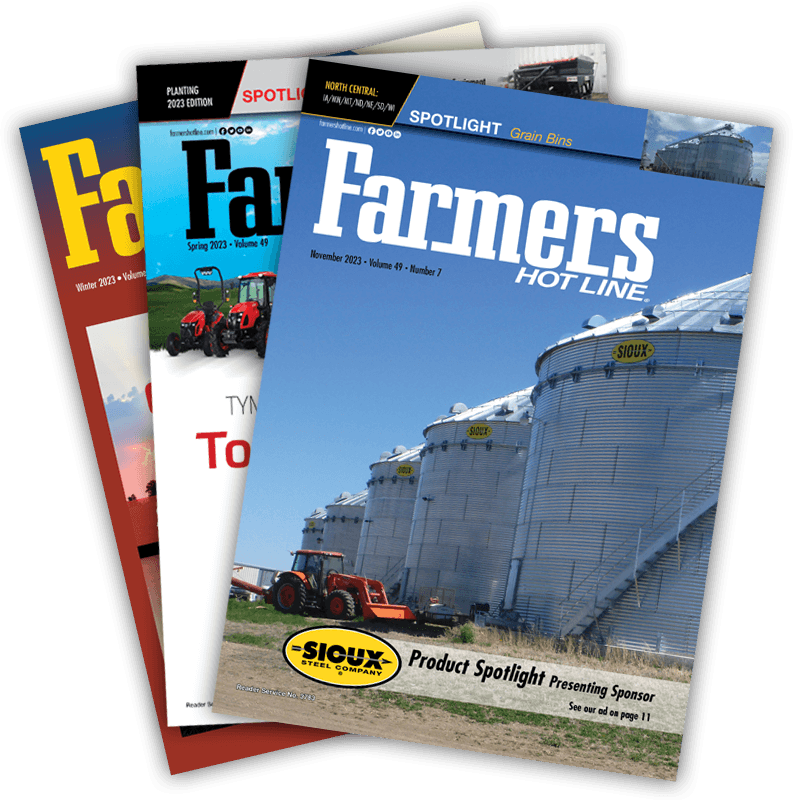Preventing Grain Bin Tragedy
Proven strategies to prevent grain bin accidents
Grain bins play a crucial role in storing and protecting harvested grain and can be found on nearly every farm growing grain crops. However, without proper safety measures, these structures can become dangerous and life-threatening.
Understanding the potential hazards associated with grain bins is vital to preventing accidents and safeguarding lives on the farm.
Know the dual hazards
The primary danger of grain bins lies in the potential for engulfment. Entering a grain bin can quickly turn into a life-threatening situation, as the grain flows like quicksand, trapping and suffocating workers.
Also, grain bins can harbor poor air quality due to mold, dust, and toxic gases, leading to respiratory issues or fatal injuries. To mitigate these hazards, farm owners and workers must recognize the risks and take proactive measures to ensure safety.
What goes wrong
Grain bin accidents can stem from various factors, but some of the most prevalent causes include inadequate safety training, poor maintenance, and equipment failure.
Lack of knowledge about grain bin operation and safety procedures can leave workers unaware of potential dangers.
Neglecting proper maintenance, such as failing to repair damaged ladders or malfunctioning equipment, increases the likelihood of accidents.
Equipment failure, such as malfunctioning grain bin augers or conveyors, can pose significant risks to workers’ safety.
Safety training
Comprehensive safety training is paramount. Workers need to be educated about the potential hazards associated with grain bins, learning to identify and address safety concerns, understand the proper use of safety equipment, and be trained in emergency response procedures.
By investing in proper training programs, farm owners can ensure that their workers are equipped with the knowledge and skills necessary to prevent accidents and respond effectively in emergencies.
Systematic prevention
First and foremost, it is essential to implement comprehensive safety protocols that outline proper grain bin operation, entry procedures, and equipment usage.
Workers should be thoroughly trained to follow these protocols diligently to minimize the risk of accidents.
Maintaining proper ventilation is crucial in grain bin safety. Ensuring that grain bins have adequate ventilation systems helps to minimize the risk of poor air quality, which can be caused by mold, dust, and toxic gases. Regular monitoring of air quality and prompt addressing of any issues that arise are essential to safeguarding workers’ health.
Using appropriate safety equipment is another critical step in preventing accidents. Providing workers with harnesses, lifelines, and personal protective gear is vital to protect them from potential hazards while working in or around grain bins. Regular inspections of safety equipment should be conducted to ensure that it is in good working condition.
Safety devices such as bin entry systems provide an additional precautionary measure. These systems are designed to monitor grain flow and can automatically shut down equipment if needed, thereby preventing engulfment accidents and ensuring worker safety.
Establishing clear communication is paramount in creating a safe work environment. Open lines of communication between workers and supervisors are essential to promptly address any safety concerns or potential hazards that may arise. Encouraging workers to report any issues they encounter fosters a safety-conscious culture on the farm.
Do you have the right safety equipment?
Having the right safety equipment is essential for protecting workers during grain bin operations. Workers should be provided with harnesses and lifelines to prevent engulfment and facilitate rescue in case of an accident. Additionally, respiratory protection, such as masks or respirators, should be supplied to safeguard against inhaling dust, mold, or toxic gases.
Proper personal protective equipment (PPE), including gloves, safety glasses, and steel-toed boots, is crucial to protect workers against injuries from falling grain or equipment.
Bin entry systems that monitor grain flow and can automatically shut down equipment when necessary can prevent engulfment accidents.
Where to find guidance
Several resources and organizations provide valuable information and support for grain bin safety. The National Grain and Feed Association (NGFA) offers various resources, including safety training programs and best practice guidelines.
The Occupational Safety and Health Administration (OSHA) provides regulations, guidance, and training materials specifically tailored to the agricultural industry, including grain bin safety.
The Grain Handling Safety Coalition (GHSC) offers training resources, educational materials, and safety checklists to help prevent grain bin accidents.
Your state agricultural extension offices often provide local resources, safety workshops, and training programs specifically designed for farm operations.


